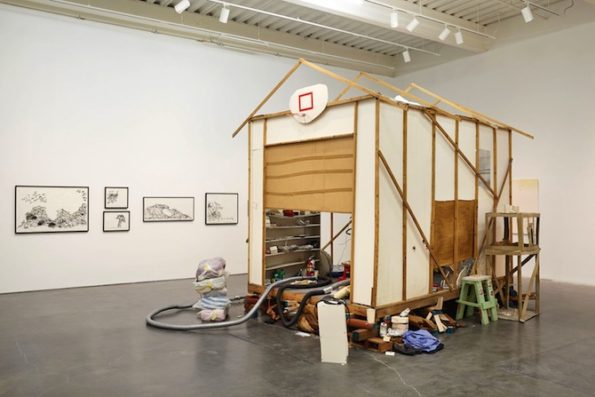Search
To search for an exact match, type the word or phrase you want in quotation marks.
A*DESK has been offering since 2002 contents about criticism and contemporary art. A*DESK has become consolidated thanks to all those who have believed in the project, all those who have followed us, debating, participating and collaborating. Many people have collaborated with A*DESK, and continue to do so. Their efforts, knowledge and belief in the project are what make it grow internationally. At A*DESK we have also generated work for over one hundred professionals in culture, from small collaborations with reviews and classes, to more prolonged and intense collaborations.
At A*DESK we believe in the need for free and universal access to culture and knowledge. We want to carry on being independent, remaining open to more ideas and opinions. If you believe in A*DESK, we need your backing to be able to continue. You can now participate in the project by supporting it. You can choose how much you want to contribute to the project.
You can decide how much you want to bring to the project.

In 1993 Sonic Youth recorded Experimental Jet Set, Trash and No Star, a key album in their career. The New Museum in New York today takes the title of the record for this season’s exhibition. It adds NYC 1993 at the beginning, in an endeavour to contextualise the chaos that fills the rooms: they want to show what young artists were doing in New York at the beginning of the nineties.
In theory the underlying thesis is that this is when the difference between high and popular culture was buried forever, thereby guaranteeing the consolidation of the interchangeable nature of cultural products across a horizontal, in principle political but also nihilist and playful, spectrum. More than 70 artists coexist on the five floors of the museum, alluding to the idea of an improvised community that the curators seem to be aiming to recreate. Amongst others, Renée Green presents her documentary series Funk Office (1991-1996); Larry Clark, his Untitled (1993), a series of intervened skates and photographs of film shoots; Pepón Osorio, The Scene of Crime (Whose Crime?) (1993), in which he reflects on his Puerto Rican identity in the New York context and Sean Launders’, (Sic) (1993), a series of 451 sheets full of compulsive writing about his day-to-day life. Also included are the piece Isla dento de una isla (1993) by Gabriel Orozco; the diptych La morgue (1992), by Andrés Serrano and The Hood (1993), by David Hammos. Rirkrit Tiravanija, Andrea Zittel, Nan Goldin, Félix González-Torres, and Frank Moore are also present. And all accompanied by their portraits, captured by Lina Bertucci at the beginning of the decade.
A visit to this exhibition raises the question once again of how to design exhibitions that include such a large number of voices. The coexistence of so many works generates a tension that seems necessary for the affection and anger that brings them together. They have nothing to do with each other, they don’t dialogue with each other, and each one heads off in its own direction. Is it legitimate in this case, therefore, to shelter under the allusion of the disastrous title to avoid taking responsibility for the elaboration of a discourse? Precisely for the moment that it analyses, this exhibition sits on the fine line that separates not having an argument from talking about the lack of shared ambitions. Douglas Coupland highlighted disillusion, rebelliousness and promiscuity as traits of generation X. But what does it really articulate: a demographic group or an attitude? What is the New Museum recounting in this exhibition, the work of dozens of artists or a way of confronting life, typical of youth culture at the beginning of the nineties?
1993, sees the first attack of Al Qaeda against New York. Also the start of the Clinton administration, the end of the siege of Mostar, Pablo Escobar dies in a shooting and an overdose ends the life of River Phoenix. The deaths associated with AIDS reach 50,000 people in the United States. These endings coexist with other televised events in monitors placed on the fifth floor of the building. From top to bottom this exhibition remembers a moment in history that we all share, each one of us, with whatever else we were doing in the year 1993.

Paloma Checa-Gismero is Assistant Professor at San Diego State University and Candidate to Ph.D. in Art History, Criticism and Theory at the University of California San Diego. A historian of universal and Latin American contemporary art, she studies the encounters between local aesthetics and global standards. Recent academic publications include ‘Realism in the Work of Maria Thereza Alves’, Afterall, autumn/winter 2017, and ‘Global Contemporary Art Tourism: Engaging with Cuban Authenticity Through the Bienal de La Habana’, in Tourism Planning & Development, vol. 15, 3, 2017. Since 2014 Paloma is a member of the editorial collective of FIELD journal.
"A desk is a dangerous place from which to watch the world" (John Le Carré)